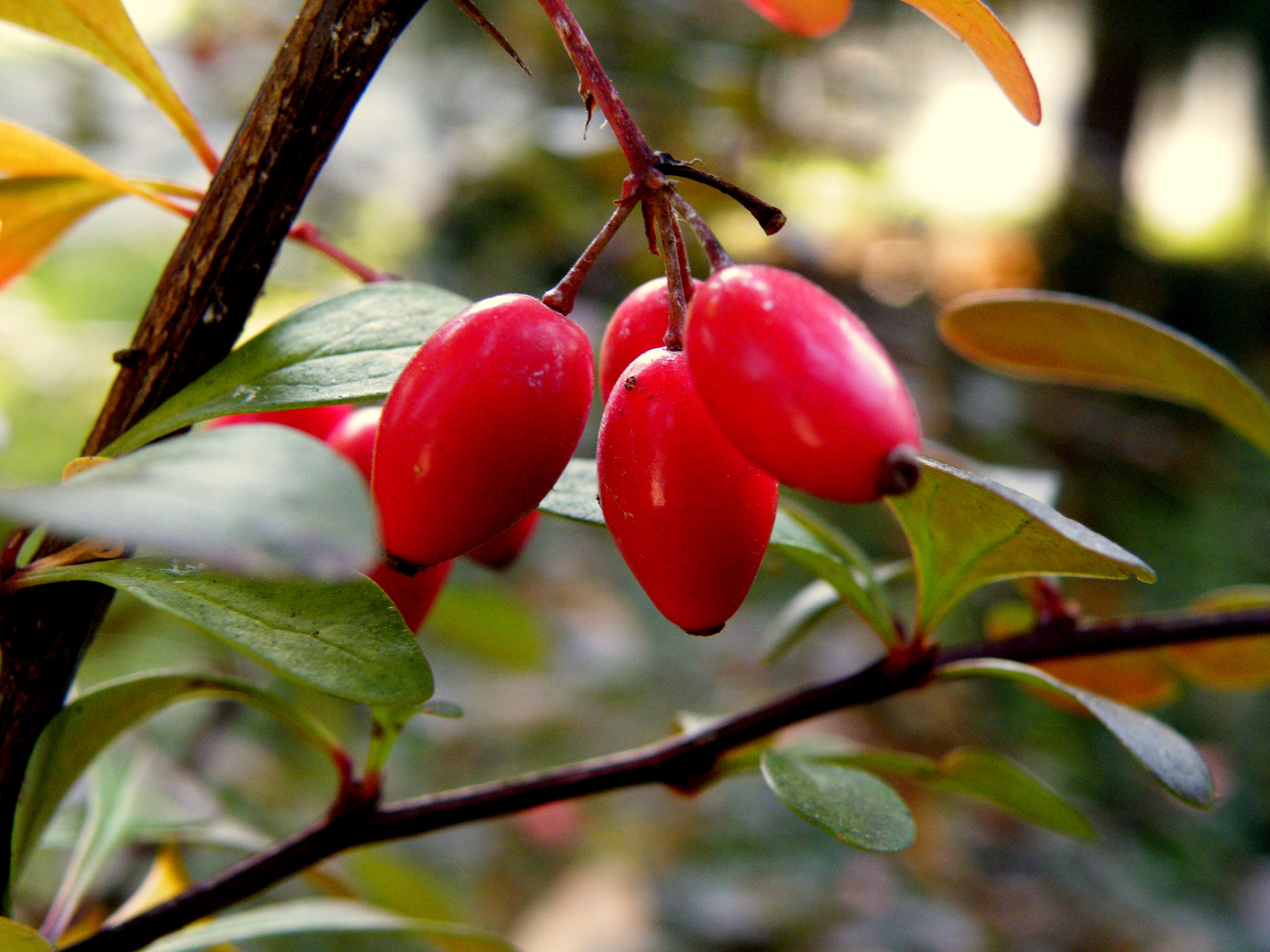

Berberis thunbergii (Japanese Barberry) is a compact, woody shrub with arching, slender, zig-zag branches bearing a single, sharp spine at each node below each rosette of leaves. The wedge-shaped leaves are untoothed, slightly blue-green to green to dark reddish purple, and borne in whorls or clusters. Some Japanese Barberry cultivars are spectacular additions to the landscape where they bring a strong color accent from spring to fall. Tiny, scented, pale yellow flowers appear in mid-late spring, but are insignificant in comparison to the beauty of the foliage. They grow in drooping clusters along the lower sides of the branches and are followed by an abundant crop of bright red berries in the fall. The fruits persist well into the winter. Attractive to birds, they often remain on the spiny stems after the leaves have fallen, therefore extending the season of interest of this ornamental shrub through the winter.
Berberis thunbergii is a popular ornamental plant and is present in gardens, parks, forests, and nature preserves. There are quite a few varieties used for ornamental purposes or as barrier plantings.
| Requirement | |
|---|---|
| Hardiness | 4,5,6,7,8 |
| Heat Zones | 5,6,7,8 |
| Climate Zones | 2, 3, 4, 5, 6, 7, 8, 9, 10, 11, 12, 13, 14, 15, 16, 17, 18, 19, 20, 21, 22, 23, 24, 2B, 3A, A3, 3B |
| Plant Type | Shrubs |
| Plant Family | Berberidaceae |
| Exposure | Full Sun, Partial Sun |
| Season of Interest | Spring, Summer, Fall, Winter, Mid Spring, Late Spring, Early Summer, Mid Summer, Late Summer |
| Height | 4' - 5' |
| Spread | 4' - 5' |
| Water Needs | Low, Average |
| Maintenance | Low |
| Soil Type | Chalk, Clay, Loam, Sand |
| Characteristics | |
| Garden Styles | City and Courtyard, Coastal Garden, Informal and Cottage |
| Planting Place | Beds and Borders, Hedges and Screens |